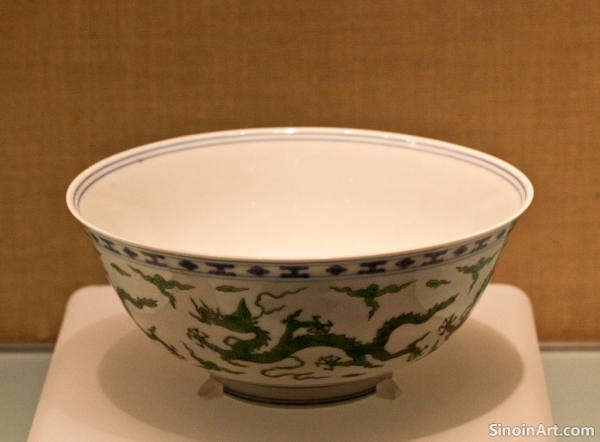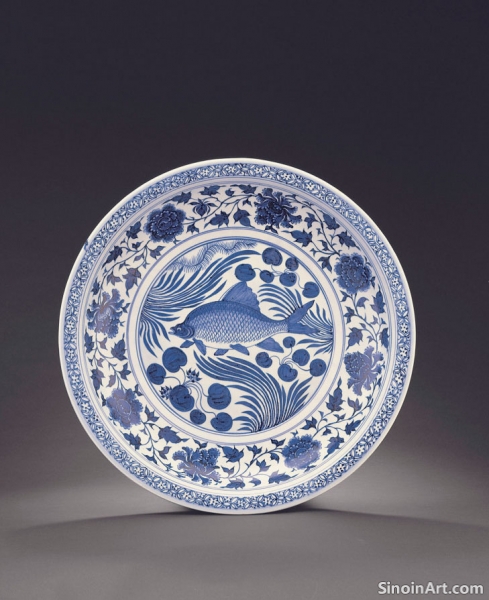Yuan Ceramics and the Continued Production of Celadon Wares
|
While blue and white porcelain rose to prominence, celadon wares continued to be produced during the Yuan Dynasty, though often with some modifications in style and technique from the Song Dynasty. These later examples of celadon ware demonstrate the continuing importance of this style, even with the arrival of new design trends.  Yuan celadons are often characterized by their thicker glazes, deeper green hues, and more robust forms than their Song predecessors. The changes in form and glaze colour indicate an adaptation of previous styles.  While the overall aesthetic became somewhat bolder, Yuan celadons often still retained the refined elegance and simplicity that had become synonymous with this type of pottery. The stylistic changes were not wholesale but instead built on previous styles and methods.  Longquan kilns continued to produce high-quality celadons, and this kiln region continued to be a central producer of high quality celadon throughout the Yuan period. The ongoing production of celadon wares during the Yuan Dynasty highlights the enduring appeal of this type of ceramic and its continued importance within the traditions of Chinese pottery. The continued influence of celadon production demonstrates the importance of stylistic continuity in the development of Chinese pottery. |
Tag : Yuan celadon, Chinese green glaze, Longquan kilns, Song influence, ancient pottery
Related information
- The Role of Yuan Dynasty Porcelain in Funeral and Burial Practices
- The Legacy of Yuan Porcelain: Its Lasting Impact on Ceramic Art
- Future Directions in Yuan Dynasty Porcelain Research: New Discoveries and Interpretations
- Understanding the Motifs and Symbolism in Yuan Dynasty Porcelain Decoration
- The Social and Economic Context of Yuan Dynasty Porcelain Production
This article explores the use of Yuan Dynasty porcelain in funeral and burial practices, examining its significance as grave goods intended to accompany the deceased, providing insights into Yuan beliefs about death, the afterlife, and the symbolic meaning of these ceramics.
This article details the enduring legacy of Yuan Dynasty porcelain, emphasizing its impact on blue and white production, its influence on ceramic styles globally, and its lasting contribution to ceramic art history.
This article discusses future directions in Yuan Dynasty porcelain research, including new archaeological discoveries, advances in scientific analysis, and the potential for more detailed cross-cultural studies, promising to further enrich our understanding of the era.
This article explores the symbolism and cultural meanings behind the decorative motifs found on Yuan Dynasty porcelain, such as floral, animal, geometric, and figural designs, offering a deeper understanding of the era's culture.
This article explores the social and economic context of Yuan Dynasty porcelain production, examining the role of Mongol patronage, mass production techniques, and the importance of trade in the ceramic industry.